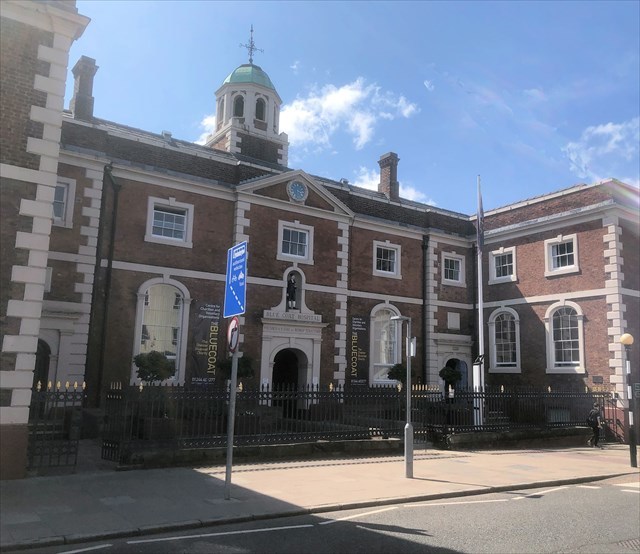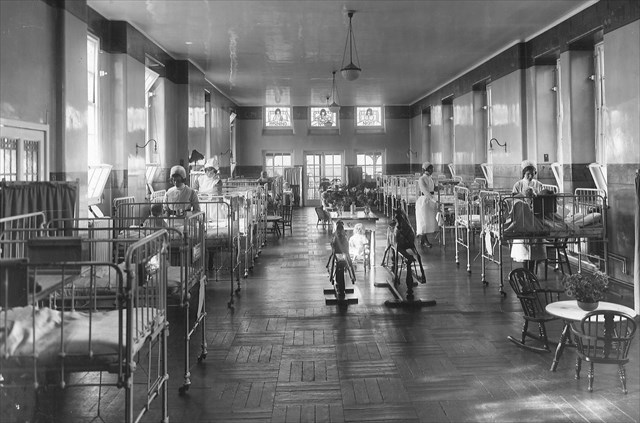The Hospital of St John the Baptist (Stage 1)

The Hospital of St John the Baptist was founded in 1190, on the site of the current Bluecoat building. This was an ecclesiastical foundation with a priory, housing brethren and lay servants living under religious rule. In 1241, permission was given for a chapel to be built.
The hospital had a chequered history with several phases of neglect and impoverishment. However, it is known that around the middle of the 14th century there were 13 beds kept ready for the city’s poor. Each inmate was to receive a daily allowance of a loaf of bread, a dish of pottage, half a gallon of ale and a piece of meat or fish.
The almshouses behind the Bluecoat – the direct successors to this hospital – still provide accommodation to this day.
In 1644 the hospital was demolished. Its stone buildings, chapel and the surrounding wall were pulled down, so they couldn’t provide cover for the Parliamentary forces who were besieging the city. Nothing remains of this original hospital building.
In 1717, the Chester Corporation gave permission for the Bluecoat Hospital School to be built. This school for poor boys was one of the first charity schools outside London. It was built on the site of the original hospital on condition that a new chapel was also built there. This is the building that you see at the coordinates of stage 1.
The Bluecoat School closed in 1949 and the building is now a charity hub.
The date on the rectangular plaque on the wall at stage 1 is ABCD.
Take a short walk along the walls to get to stage 2.
Chester Infirmary (Stage 2)

Chester Infirmary was founded in 1755 following a bequest by Dr William Stratford, who had died two years earlier. It was funded by public subscriptions, and was free to patients who were recommended by the subscribers. It was originally housed in temporary accommodation in part of the Bluecoat School but soon became overcrowded so in 1758 construction of the permanent building was started designed for 100 beds and this was completed in 1761. Over the years, extensions were built, and by 1902 the hospital had 118 beds. During the 1990s patients were transferred to new facilities provided by the Countess of Chester Hospital, and the infirmary closed in 1993. Other than the original building, all the later extensions were demolished in 1998. The original hospital building was converted into apartments in 2001.
The most famous physician at the hospital was Dr John Haygarth who served from 1766 to 1796. He made the decision to separate infectious and non-infectious patients, which greatly improved the outcomes for his patients. Many of the protocols he developed are still practised today.
The first date on the plaque at stage 2 is EFGH.
The cache is not far from stage 2.
The coordinates of the cache are:
N53 11.(C-D)FF W2 53.CGE
The cache is not in the city walls or anything attached to the city walls.
References
https://thechesterbluecoatcharity.co.uk/history/
https://chesterwalls.info/infirmary.html